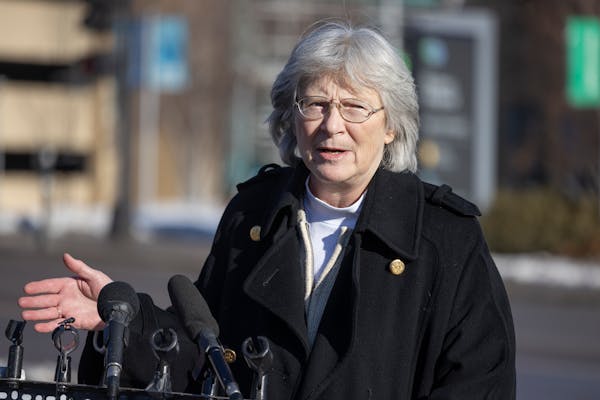Minnesota hospitals are fighting to maintain some COVID-19 response measures that are scheduled to end next month when a federal public health emergency declaration is lifted.
Flexibility around the timing of patient transfers and the broad use of telemedicine helped hospitals endure COVID-19 surges over the past three years and could still help them as they struggle with staffing shortages and patient overcrowding, said Bob Hume, a spokesperson for the Minnesota Hospital Association.
"These things made sense in an emergency," Hume said. "We're saying we're still in one."
President Joe Biden signed legislation this week that lifted a federal emergency declaration, but that was largely a symbolic gesture amid stable or declining COVID-19 levels nationwide. The meatier change is scheduled for May 11 with the end of the federal public health emergency that gave hospitals flexibility and made COVID tests, vaccines and treatments free for patients.
Nothing in the latest COVID-19 data suggests a spike in the infectious disease that could disrupt that timetable. Only 204 people with COVID-19 filled inpatient beds in Minnesota hospitals on Tuesday, making up less than 3% of the state's inpatient population, according to Thursday's weekly state pandemic update. That is the lowest rate since last April, and far below the record in November 2020 when 27% of all hospitalized patients had COVID-19.
Coronavirus levels are declining in sewage samples collected at more than 40 treatment plants statewide, according to the latest results published by the University of Minnesota.
Medicare increased payment rates 20% for hospital treatment of COVID-19, and that bonus will go away next month. Given the low share of patients who have COVID-19, that switch won't hurt hospitals too much, said Joe Schindler, the hospital association's vice president of finance policy and analytics.
Other changes will be significant, and disrupt new forms of patient care that have become the norm during the pandemic, he said.
Patients during the pandemic could visit online with doctors to receive refills of controlled substances, including medications such as buprenorphine that manage opioid addictions. At least one in-person visit will be required as of next month for patients to gain those prescriptions, which could limit instances of drug misuse but also make it harder for people to access vital medications.
Hospital association leaders are writing to federal authorities and traveling to Washington, D.C., this month to argue for an extension of some provisions of the public health emergency. They particularly want to maintain flexibility for Minnesota's broad network of small, rural critical-access hospitals, which were allowed to increase their bed capacities and keep patients for longer periods of time.
Schindler said the flexibility allowed small hospitals to treat more severe illnesses, with the help of video consults from specialists, which eased the bed crunch in urban hospitals. Hospitals also are hoping to avoid an old rule, designed to prevent fraud and abuse, that required Medicare patients to be admitted for at least three days before they could be transferred to skilled nursing facilities.
"Why should there be an artificial three-day hospital stay?" he asked, when some patients don't need that much inpatient care.
Next month's transition will also make COVID-19 much more like other conditions in terms of how it is treated and who pays for care. Many health plans will still fully cover vaccinations, but patients could lose access to free at-home COVID-19 tests and see new and rising copays for treatments of the infectious disease.
Many of the tests, vaccines and treatments for COVID-19 have only been available under emergency use authorizations by the U.S. Food and Drug Administration. The agency clarified that the end of the public health emergency won't affect access to those still-experimental resources awaiting full FDA approval.
Carolyn Parnell, 'trailblazer' who served as Minnesota's first IT commissioner, dies


